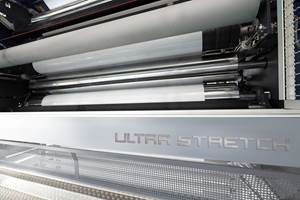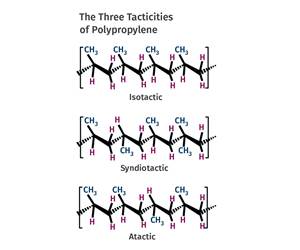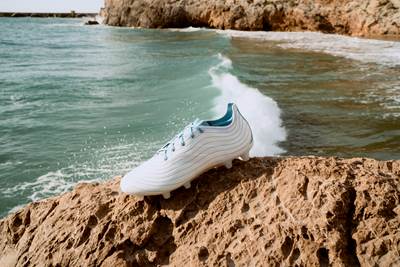Prices Rise As Leaves Fall
After a mid-summer respite from price increases in commodity resins—with some prices actually declining—processors face rising prices again heading into fall.
After a mid-summer respite from price increases in commodity resins—with some prices actually declining—processors face rising prices again heading into fall. Materials suppliers attribute the turnaround to similar behavior in monomer costs.
PE prices on the way up
Polyethylene prices remained flat through July, and suppliers held back on implementing their July 1 price hikes of 7¢/lb. However, resin makers appeared resolved to push through this hike in August as well as another 5¢ increase announced for Aug. 1.
The London Metal Exchange (LME) September short-term futures contract on butene LLDPE for blown film is 60.3¢/lb, up from August’s 55.5¢.
Contributing factors: Suppliers attribute their intent to firm up prices to the continued rise of feedstock and energy costs to levels comparable to or higher than historic peak prices. Ethylene monomer contracts for July settled 2¢/lb higher, but increases of 7¢ to 8¢/lb were sought for August contracts. “This has resulted in margins that are squeezed between ethylene and polyethylene,” said one supplier.”
Meanwhile, PE resin inventories remain tight. High summer temperatures and associated power outages have slowed resin production by 5% to 10%, according to some industry sources.
PP turning upward again
Polypropylene prices dropped by 1.5¢ to 2¢/lb during July. Nonetheless, suppliers announced a price increase of 4¢/lb for Aug. 1. Meanwhile, LME’s September short-term futures contract for g-p injection-grade homopolymer moved up to 60.5¢/lb from August’s 55.1¢/lb.
Contributing factors: Resin prices dropped when propylene monomer contract prices for July fell by 4¢/lb. However, in August, monomer prices were set to rebound by the same 4¢. PP suppliers are now aiming to firm up resin prices before margins are squeezed further. Adds one major supplier, “Resin demand is a bit better than we had anticipated for summer months.”
PVC: 2¢ hike expected
It has been an unusual year so far for PVC resin: There was no spring bump in demand, and prices actually fell 2¢ in March. Suppliers attempted to get the 2¢ back in May but had to put it off. Last month, PVC producers lined up firmly behind implementing that hike on Aug. 1. What’s more, Formosa, OxyChem and Georgia Gulf announced another 2¢ increase for Sept. 1.
Contributing factors: Price stability for PVC is rare, but it persisted for four months, even as demand improved slightly each month. Window profile demand last month was satisfactory, and pipe was strong, but siding was weak.
PS hikes: 9¢ now pending
After raising prices a total of 9¢ in May through July, polystyrene producers tried unsuccessfully for an additional 4¢ dated July 10. They delayed that hike first to Aug. 1 then to Aug. 15. As of mid August, Dow, Ineos, and Chevron all posted an additional 5¢ for Sept. 1. At press time, Nova had not been heard from.
Contributing factors: Recent price increases have all been driven by feedstock costs, not demand. PS markets for the first half of 2006 were down 1.9%, according to the American Plastics Council. Meanwhile, benzene contract prices rose from $3.30/gal in June to $3.87 in July and slipped back to $3.72 in August. Mid-August spot benzene was $3.80 to $3.90/gal.
Nylon and MDI prices up
Rhodia lifted tabs on its Technyl nylon 6 and 66 compounds by approximately 7¢/lb as of Sept. 1.
BASF Corp. issued a 10¢/lb increase on MDI products for rigid PUR foams, effective Aug. 1.
| Market Prices Effective Mid-August A |
|
|
KEY: Colored areas indicate pricing activity. An arrow () indicates direction of price change. aTruckload, unless otherwise specified. bUnfilled, natural color, unless otherwise specified. cBased on typical or average density. dNot applicable. eNovolac and anhydride grades for coils, bushings, transformers. fNovolac and anhydride grades for resisitors, capacitors, diodes. gIn quantities of 20,000 lb. h19,800-lb load. jLME 30-day futures contract for lots of 54,564 lb.. |
Related Content
The Fundamentals of Polyethylene – Part 1: The Basics
You would think we’d know all there is to know about a material that was commercialized 80 years ago. Not so for polyethylene. Let’s start by brushing up on the basics.
Read MoreFundamentals of Polyethylene – Part 5: Metallocenes
How the development of new catalysts—notably metallocenes—paved the way for the development of material grades never before possible.
Read MoreApril 2025: Mixed Bag for Prices of Volume Resins
The end of the first quarter marked higher prices for polyolefins and relatively flat pricing for nearly all other resins.
Read MoreDelivering Increased Benefits to Greenhouse Films
Baystar's Borstar technology is helping customers deliver better, more reliable production methods to greenhouse agriculture.
Read MoreRead Next
For PLASTICS' CEO Seaholm, NPE to Shine Light on Sustainability Successes
With advocacy, communication and sustainability as three main pillars, Seaholm leads a trade association to NPE that ‘is more active today than we have ever been.’
Read MoreMaking the Circular Economy a Reality
Driven by brand owner demands and new worldwide legislation, the entire supply chain is working toward the shift to circularity, with some evidence the circular economy has already begun.
Read More










